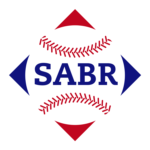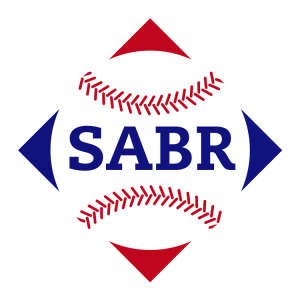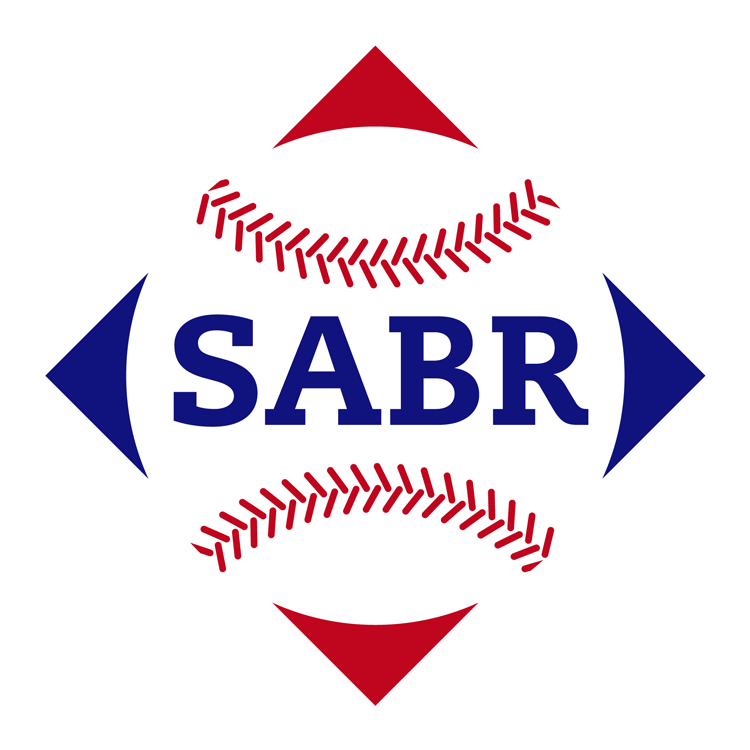In the 1970s, the video gaming industry experienced a trio of events that were instrumental in cementing its position in mainstream culture. The first milestone was Pong, the classic game that not only brought arcade machines into the spotlight but also marked the advent of the first generation of gaming consoles.
Soon after, the release of Space Invaders hit the market, becoming an instant sensation and spawning the creation of video arcades all over the world. And then there was the Atari 2600 Video Computer System, which emerged as the dominant player of its time, outselling all its competitors combined, and securing its place as a household name.
The First King of Consoles
The Atari 2600, belonging to the second generation of consoles, was among the first systems to make use of interchangeable cartridges. By breaking free from the limitations of pre-programmed circuit boards, game developers could now explore ideas beyond the tried and tested ones like Pong, and, let’s face it, the endless variations of Pong pretending to be tennis, hockey, and handball.
With this newfound freedom, each gaming system brought forth its unique take on certain concepts such as racing, baseball, football, pinball, space invaders, and asteroids. The Atari 2600 was so successful that it had not one, but five major baseball releases that spanned ten years of time.
Learning Curves
Despite the fact that the console hardware does not change, a new system comes with its own unique set of tricks and shortcuts yet to be discovered. Programmers do not have the luxury to experiment with all the console’s capabilities before deadlines rear their heads.
Over time, the community does become familiar with the console’s intricacies and develop new techniques to maximize its potential. As a result, games released at the end of a console’s lifespan are more complex and visually stunning than the launch titles.
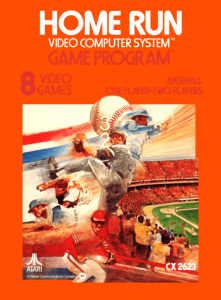
Home Run (1978)
In the early days of video game consoles, each new system tended to come with a baseball game upon release. The Atari 2600 was no exception, with its included game, Home Run. The game received negative reviews at the time, due to its liberties with the sport. But it is important to remember that game design in this era required simplicity. Other sports titles, such as Basketball and Ice Hockey, similarly reduced the number of on-field players and simplified the rules.
Despite its reductionist take on baseball, Home Run plays well. It is fast-paced, with responsive controls, and does not overcomplicate the options available to the player. The Atari 2600 primarily used an 8-direction joystick with a single button, which worked best with simple games. Today, the standard controller has three joysticks and twelve buttons and the complexity of games followed suit.
Home Run allows for both single-player and two-player games, with players able to choose between variations on the game using the Game Select and Difficulty switches. These switches functioned as the “Options Screen” of the time, allowing players to adjust the number and placement of fielders, as well as their speed.
Curve Ball
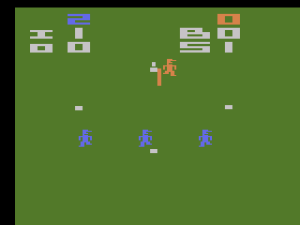
In the game, the pitcher can curve the ball and adjust its speed. When a batter hits the ball fair, fielders can catch it and use it to tag out runners and the batter. There is no throwing involved. With fast-moving fielders, double and triple plays are common.
On the batting side, the player is responsible only for striking the ball. If the ball goes off-screen, baserunners will stop at the next base, unless the ball traveled over the second base bag, which counts as a home run.
Baserunners automatically advance to the next base as long as the ball is on the screen and the fielders are not in the possession of the ball. The simple controls mean that player mistakes feel like their own fault, rather than ones caused by poor game design.
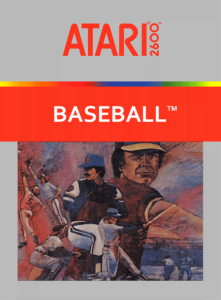
RealSports Baseball (1982)
By the year 1980, Atari dominated the video game market establishing themselves as the leading manufacturer of home video games. Few companies were willing to pony up the capital to challenge the leader. However, that all changed with the entrance of Mattel and their competitor to the Atari 2600, the Intellivision.
As part of their marketing strategy, Mattel enlisted the help of George Plimpton to showcase their baseball game, World Series Baseball, against Atari’s Home Run in TV advertisements. Atari, not willing to give up their position as the market leader, responded with their RealSports series.
The RealSports series aimed to replace the abstract representations of their earlier sports games with more accurate depictions. It featured nine players on the field. Players would throw the ball across the diamond rather than running to tag the opposition out.
The pitcher in this game still had an array of pitches – a fastball, riser, sinker, and intentional ball. Ironically though, they all looked exactly the same on-screen (which may explain the lack of a curveball). The game allowed for one or two players, but the computer would never swing at an intentional ball in single-player mode, rendering it useless.
The batter had the option to hit the ball on the ground or in the air, with balls hit in the air having a sound effect to alert the defense as these balls had the potential to carry out of the park for a home run. Bunting was also an option.
Subtraction by Addition
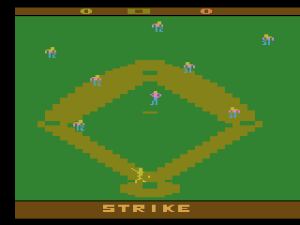
However, the more complex graphics of the game posed a problem, as the Atari games lost the feeling of tight control at the plate. The swings were slow and muddy, with no sense that the bat was connecting with the ball.
The players control the runners manually, which was a mixed blessing. This required manually running to first base after hitting a ball and even rounding the bases after hitting a home run. Stealing bases was possible by changing control from the batter to the runner while at the plate, but the player needed to remember to switch control back to the batter after stealing.
Fielding became more difficult with a full team on defense, but RealSports did a good job of auto-selecting the fielders. This was exceptionally important in with a controller that offered limited options for input. The throwing speed is well-balanced, giving players a reasonable chance to throw out the hitter from anywhere in the infield. Players can throw out hitters from the outfield too, considering the dimensions of the ballpark. (Extrapolating from 90 feet between bases, the screen is 176 feet down the lines and 133 feet to center field).
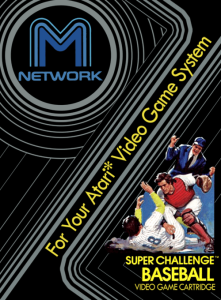
Super Challenge Baseball (1982)
Mattel soon realized that they could not ignore the massive user base of the Atari 2600. In response, Mattel launched an initiative called M Network to publish games on the Atari platform. Ironically, the very game that had been lauded as the reason to buy an Intellivision was ported to their competition.
Although porting a game to the Atari presented technical challenges, the developers created a faithful rendition of the original. However, the Atari version lost some features, such as excluding the shortstop position. This was likely since Intellivision controllers were radically different from the Atari’s. They featured 16 buttons that made it easier to select between the nine different players. Atari only had the single button.
Any Port in a Storm
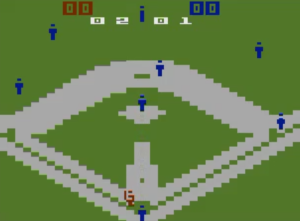
The pitching mechanism allowed for a selection of fast or slow speeds, as well as the ability to curve the ball mid-air. This is a precursor to the stock controls of future 2D baseball games. Developers refined the sequence to pitch-type selection prior to throwing and nudging the ball while in motion.
Batting in Super Challenge allows the player to bunt, but it lacks as a practical option. Bunts dropped the ball in front of the plate allowing the fielder to get an out at second as easily as first.
Unfortunately, the disconnect between the visuals of bat-meeting-ball made it difficult for players to determine if they were swinging early or late. The only time a player sees the bat move is during a swinging strike or well after the bat makes contact with the ball.
The game provided two modes of baserunning – automatic and manual – with the latter including the tedious running to first base after contact. Stealing was also possible in advanced difficulty mode.
The Fielding Roulette
Where the game fell apart, however, was in the fielding aspect. While the Intellivision had 16 buttons that made it easy to activate the fielder of choice, the Atari 2600 did not. Instead, players needed to quickly determine which fielder would be best, then activate them by:
- tapping the button once for the pitcher
- holding down the button and moving the stick left for the third baseman
- holding down the button and moving the stick right for the first baseman
- holding down the button and moving the stick up for the second baseman
- holding down the button and moving the stick down for the catcher
- holding down the button and moving the stick left twice for the left fielder
- holding down the button and moving the stick right twice for the right fielder
- holding down the button and moving the stick up twice for the center fielder
This made the game less reacting to the ball and more seeing if players could activate the correct fielder. This frustration is compounded by play balance issues, where balls fielded at third base cannot beat the runner to first.
Overall, the game made no real improvements on RealSports, whether you compared the original Intellivision version or the Atari port.
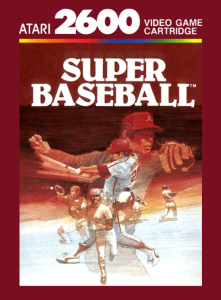
Super Baseball (1988)
During the final days of the Atari system, RealSports baseball was re-released with some updates. The original version of the game had some flaws, such as the computer player occasionally throwing past fielders or letting balls get past them. Ironically, these quirks added an element of human error to the game, similar to the mistakes a human opponent might make.
Super Baseball maintains the same basic mechanics as the original, with one major change: fielder speed significantly increased. However, this modification resulted in the breaking of all play balancing from the original game.
When Everyone is Super, No One Will Be
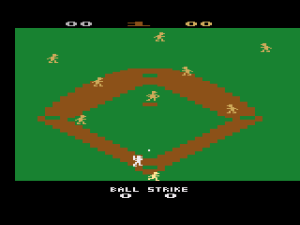
As a consequence, it became more efficient for a fielder to run and tag out baserunners than to attempt to throw to any base. For example, a fielder at third base could easily run and tag the batter before they reach first base. In some instances, even the left fielder could beat the runner to first base. A center fielder could, with regularity, tag out the runner going to second and then quickly tag out the batter for an unassisted double play.
This version bore similarities to the classic Home Run game, albeit without the charming abstraction of the sport. The resulting game was fundamentally different from the original, leaving players to ponder whether these changes were an improvement.
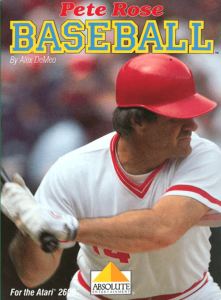
Pete Rose Baseball (1988)
In 1978, baseball legend Pete Rose was featured in a commercial for Atari’s Home Run game. But as the console entered its twilight years, Pete Rose would have his own game for the system. This game was a remarkable achievement, pushing the Atari 2600 to its limits. Inspired by competition from the more advanced Nintendo Entertainment System and Commodore 64, Pete Rose Baseball boasted impressive graphics and animation that provided a realistic windup, pitch arc, and swing.
The game featured an over-the-pitcher’s-shoulder view for batting, similar to the groundbreaking Hardball! game for the Commodore 64. Pitchers had a selection of five pitches (fastball, sinker, screwball, curveball, change up) and could position themselves on the rubber. Positioning allows them to throw inside or outside, and this would become a common feature of 2D baseball games. Batters could also move in the box, and the feeling of making contact with the ball was fairly good.
Pete Rose Baseball was the first Atari game to include a shadow for the ball when hit in the air. This let the game differentiat between fly balls and ground balls. Balls could drop in the outfield. Balls could go over an actual wall for a home run. It created a more realistic baseball experience.
After the ball is hit, the game displays only that section of the field. Accordingly, a mini-map of the bases is displayed to track runners.
Silver Slugger, Iron Glove
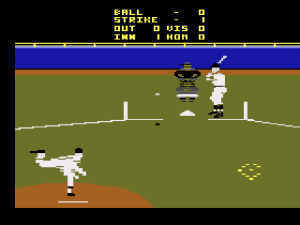
Fielding, however, was the game’s weak point, especially in the infield. Like Super Challenge Baseball, the player holds the button and selects a direction to activate an infielder.
However, unlike other baseball games, the infielders in this game have invisible boundaries that restrict their movement.
The shortstop can only field in the top 25% of the screen, while the third baseman covers the next 25%. The pitcher and catcher are limited to the following 25% and bottom 25%, respectively.
This presents an obvious flaw – the natural trajectory of the baseball is away from the plate and towards the outfield. If the player misses with one fielder, it is nearly impossible to switch to a different fielder in time. The boundaries of each infielder is most glaring when the ball stops just prior to where that fielder can move.
Outfielders do not have this limitation. Hitting the ball to left, center, or right gives the player the option to control that one outfielder. To compensate for the lack of boundaries, bugs cause the outfielders to randomly teleport away from the ball.
As a result, despite the progress made in other areas, the poor fielding system undermines the overall experience.
Despite these flaws, Pete Rose Baseball was a groundbreaking game Atari 2600 game. It did not spark any resurgence of the console however. By 1988, the system was far past its prime. The game ultimately heralded features that would become standard in future Nintendo, Sega, and Commodore 64 baseball games
Ten Years of Ballgames
Looking back on the decade of Atari 2600 baseball, we see a progression from simple, abstract games like Home Run to more realistic depictions in RealSports baseball.
We also see the impact of competition from other systems, such as the Intellivision and later, the Nintendo Entertainment System and Commodore 64.
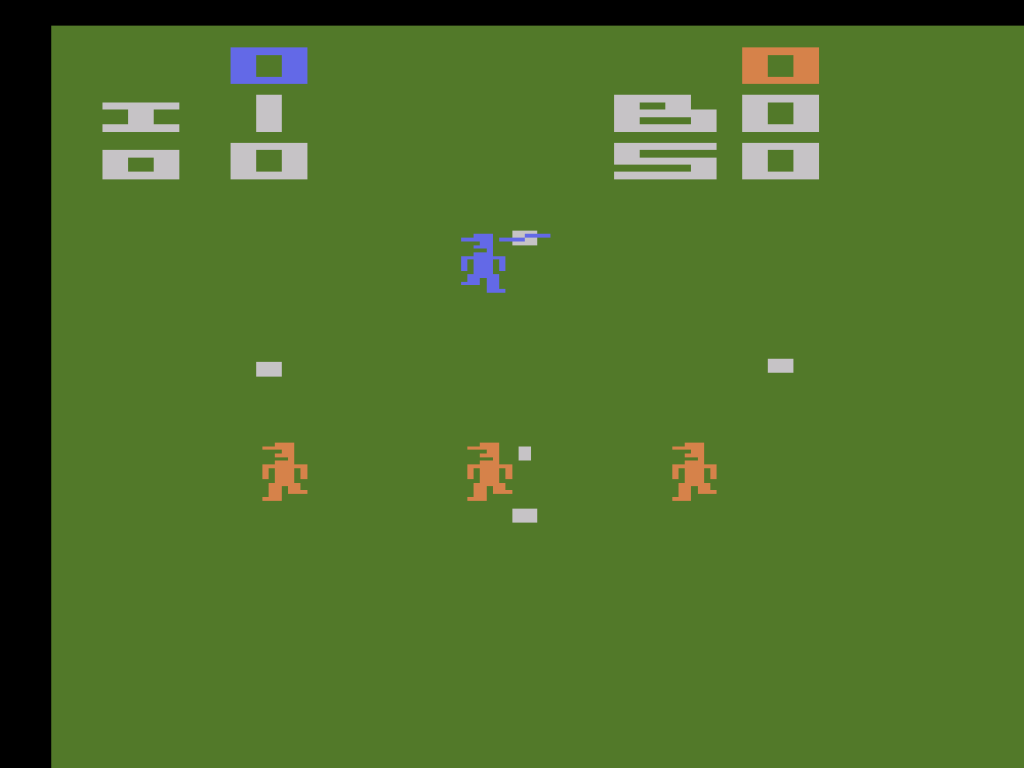
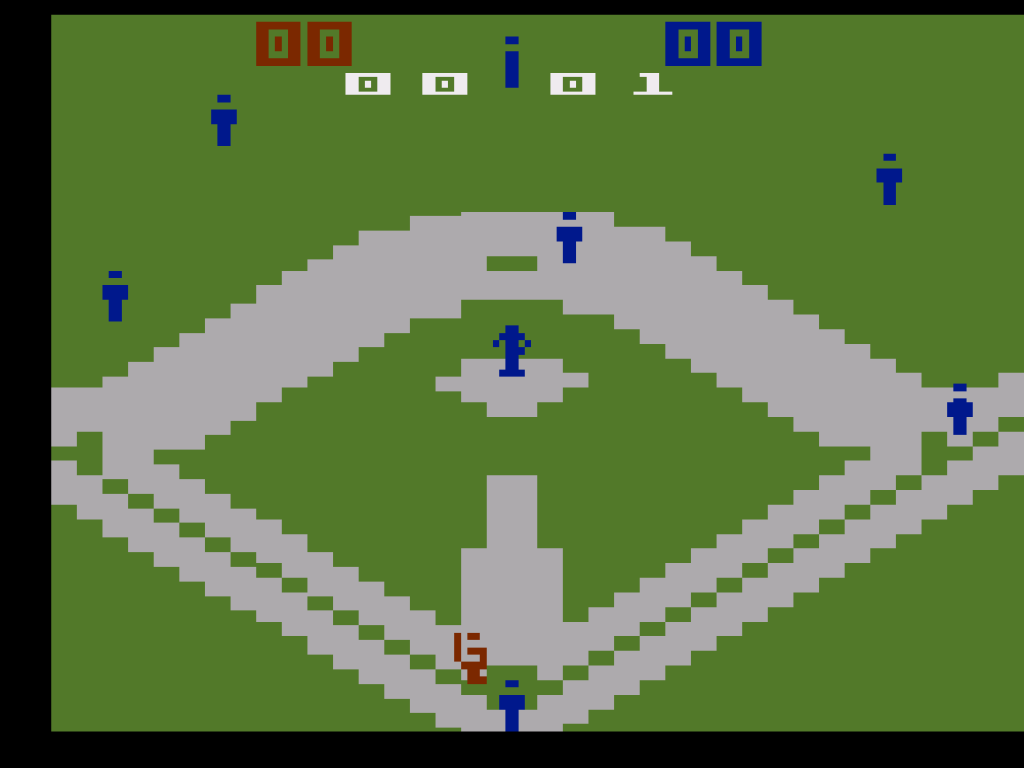

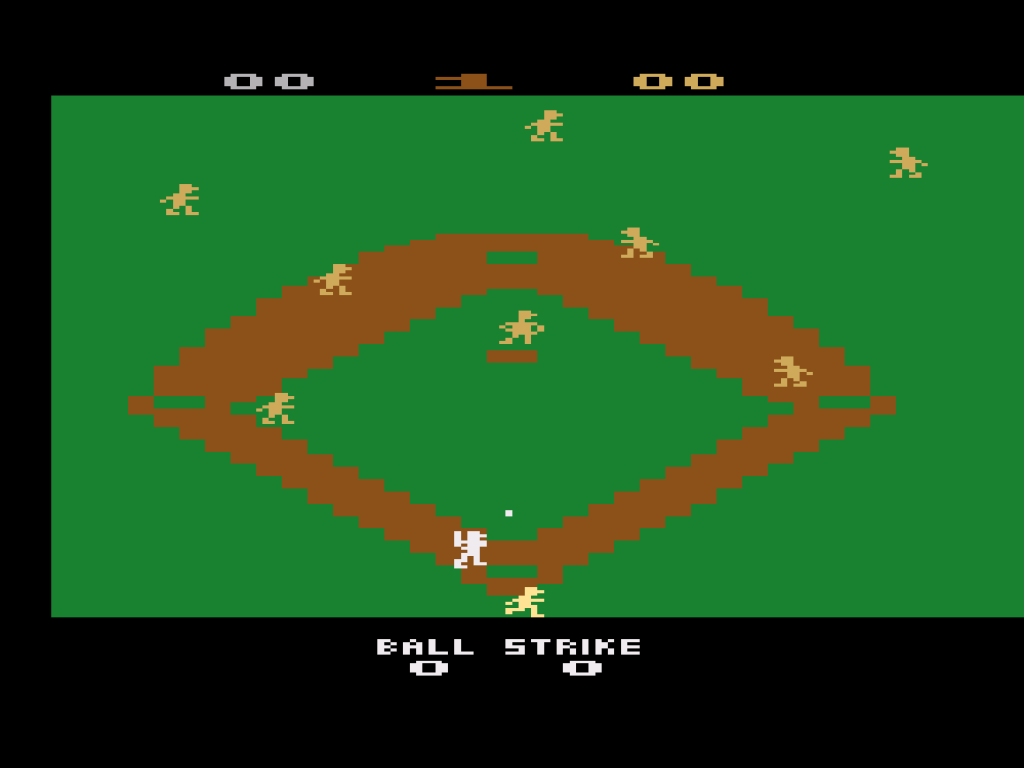
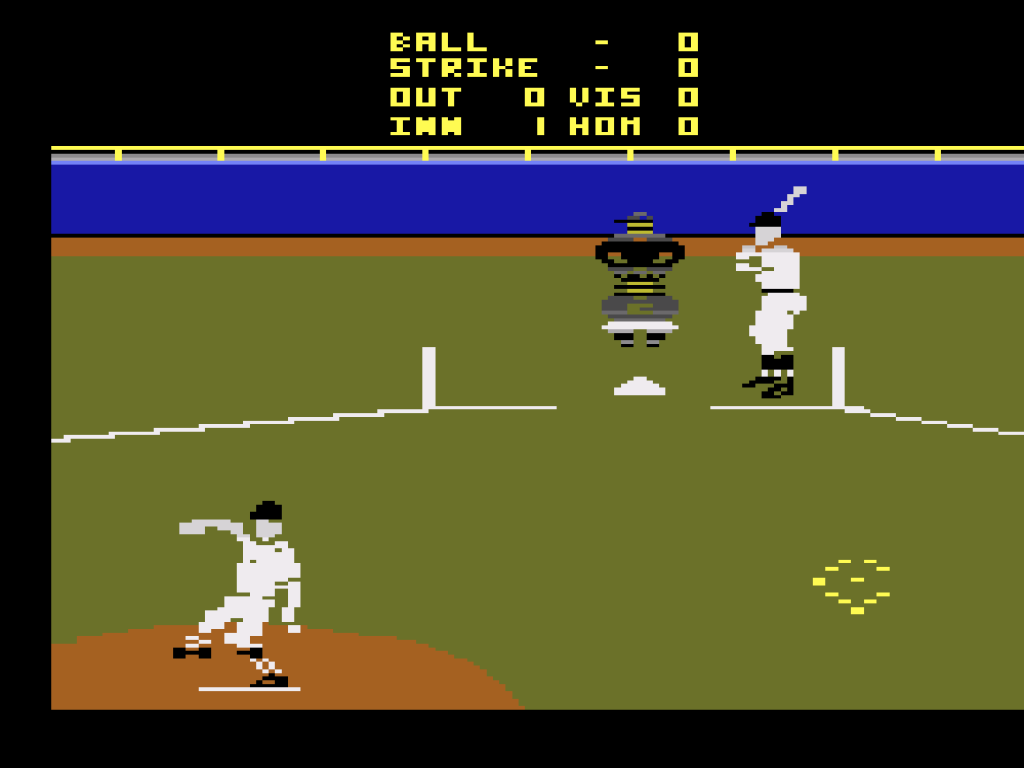
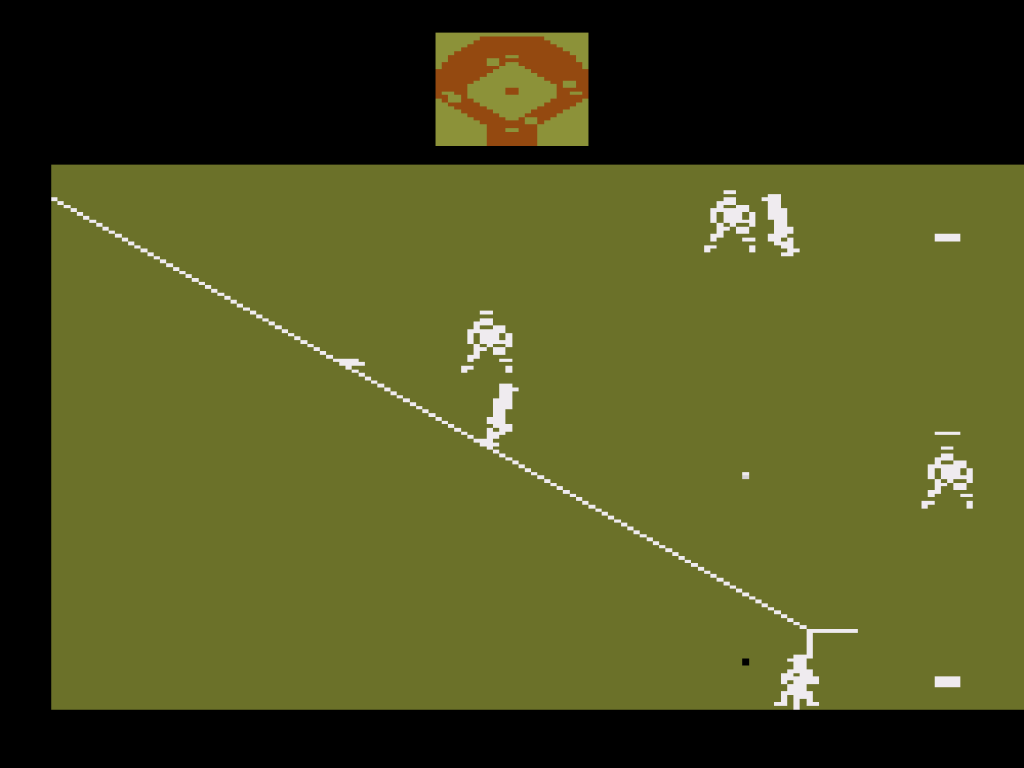
Despite their obvious limitations, these games hold a special place in the hearts of gamers who grew up with the Atari 2600 and this era of video games.
They represent a time when video games were still in their infancy, and developers were exploring new ideas, new concepts and indeed creating an entire industry out of whole cloth.
They are a reminder of how far video games have come since their early days, and a testament to the enduring popularity of America’s favorite pastime.
- Home Run Manual at Atari Age
- RealSports Baseball Manual at Atari Age
- Super Baseball Manual at Atari Age
- Super Challenge Baseball Manual at Atari Age
- Pete Rose Baseball Manual at Atari Age
- Home Run at Wikipedia
- Super Challenge Baseball at Wikipedia
- RealSports and Super Baseball at Wikipedia
- Pete Rose Baseball at Wikipedia
